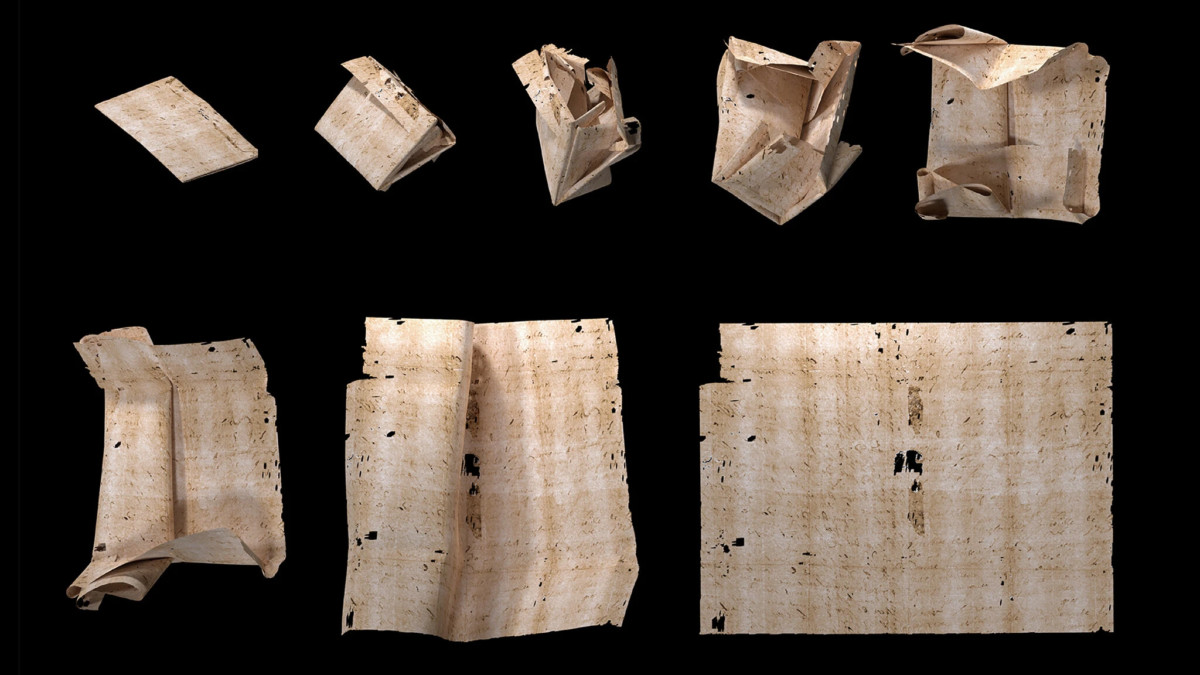Unlocking the Centuries-Old Secrets of Letterlocking
Through the ages, humans have done their best to keep their correspondence sealed and private until it was read by the intended reader: and their eyes only.
Letterlocking is such a form of security, used up until the late 1800s when the advent of mass-produced envelopes made it fade in popularity. It makes an art form of security and has always been interesting to scholars.
But they have a problem, of course. The old letters were protected from prying eyes because the sheets of writing paper were carefully folded to become their own secure enclosures, no envelope necessary.
How can they open and read the correspondence without cutting through the letterlocking system and destroying it?
Unlocking history through automated virtual unfolding of sealed documents imaged by X-ray microtomography
A team of 11 scientists and scholars at the Massachusetts Institute of Technology and other institutions published interesting findings Nature Communications, to do with exactly this conundrum. They revealed their development of a virtual-reality technique that lets them perform this sensitive task while leaving the priceless contents of historical paper archives intact.
“It has taken some very sophisticated digital technology to frustrate this sophisticated security system.” – Howard Hotson, a professor of early modern intellectual history at the University of Oxford, who had no role in the research itself
In their piece, the team describes how they virtually opened four undelivered letters written from 1680 and 1706, from a wooden postal trunk in The Hague. Known as the Brienne Collection, the box contains 3,148 items, including 577 letters that were never unlocked.
This new technique has two benefits: firstly, it can shed a light on our long history of communications security. Secondly, by unlocking private letters that had never been read before, we can study forgotten stories hidden away in archives all over the world.
Digitally opening unread letters
The first part of the process involves scanning a letter with an advanced X-ray machine. This renders a 3D image, much like a medical scan, displaying the letter’s internal structures. The 3D image is analyzed by a computer that creates an ‘unlocking’ video, transforming the folded structure into a handwritten text, like a flower unfurling.
Dr. Smith of King’s College London, who lectures on early modern English literature, said the art was so diverse that a person’s lock could serve almost as a signature. A letter, he said, “became an ambassador for you and had to embody something of you.”
Creating a catalog of letterlocking techniques
Throughout their studies, the team analyzed 250,000 letters, resulting in “the first systematisation of letterlocking techniques.” They recognized 12 recurring formats of locked letters as well as 64 categories involving such manipulations as tucks, slits, and folds. The team gave each locked letter a security score, with the most complex having an overall shape defined by 12 borders.
Letterlocking tutorial
You can find a tutorial dedicated to letterlocking on iBookBinding. Our author Erica Finch dived into this topic, collected some examples, and wrote down the process.
Source: New Technique Reveals Centuries of Secrets in Locked Letters
Please Support us on Patreon!

Moreover, starting with the pledge level of $3, you will get a digitized vintage book about bookbinding, book history, or book arts each month from us!
These pledges help iBookBinding to continue its work and bring more information about bookbinding and book arts to you!


